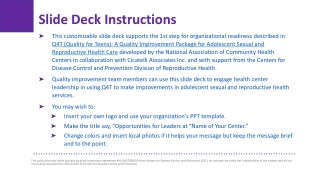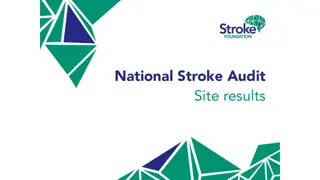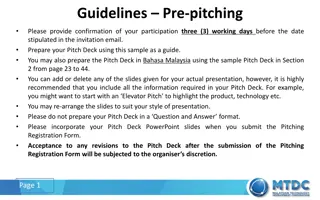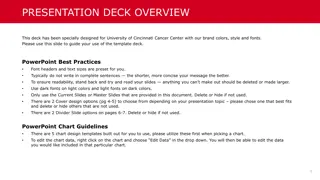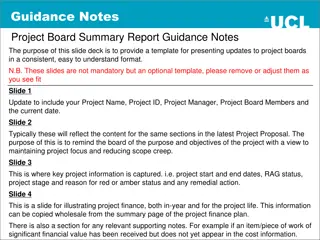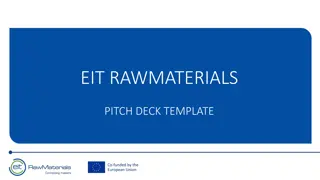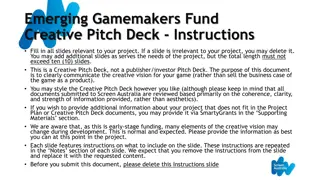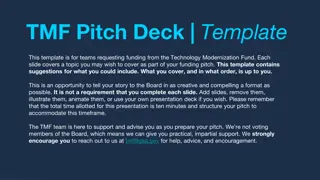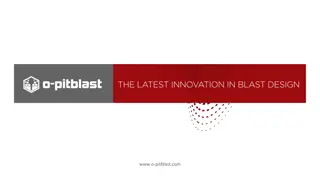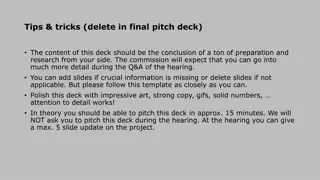
Customer Defects Analysis Project
"This project aims to identify and address customer defects with a detailed focus on the problem statement, team composition, defect measurement, project objectives, and improvement actions implemented. Through a structured approach including process mapping, data collection, and evaluation, the project seeks to enhance customer satisfaction by addressing key nonconformance issues. Follow the journey of defining process scope, customer defect specifications, data sampling, and experimentation to achieve optimal outcomes while measuring and improving process capability."
Download Presentation

Please find below an Image/Link to download the presentation.
The content on the website is provided AS IS for your information and personal use only. It may not be sold, licensed, or shared on other websites without obtaining consent from the author. If you encounter any issues during the download, it is possible that the publisher has removed the file from their server.
You are allowed to download the files provided on this website for personal or commercial use, subject to the condition that they are used lawfully. All files are the property of their respective owners.
The content on the website is provided AS IS for your information and personal use only. It may not be sold, licensed, or shared on other websites without obtaining consent from the author.
E N D
Presentation Transcript
Problem Statement: What is the customer s defect/unhappy with product/process/service received? This needs to be complete and detailed. Who is the customer, What is the problem, Where is it happening, and how bad is it (DPPM or DPMO)? Do not include solutions, conclusions or causes. Also include project selection method from project title page. Nb: This may require redrafting based on data gathered. (eg. Scrap; Pareto top issues, initial sampling plan data review, etc) Team: Process Owner: Team Members: Customer(s): List External or Internal customers or both Critical To s: (Ideal Process, Product, Service for the defect in the problem statement) CTDelivery: CTQualtiy: CTCost: CTXtra: Defect Definition or Project Measurement: Unit of customer nonconformance. How is the defect in the problem statement measured? List equation used to calculate capability on the top right hand side of this page. If using defects calculate DPMO if using defectives calculate DPPM. Project Objective: 1) Identify major causes of nonconformance(s). 2) Identify optimal outcome of the project at its conclusion Capability: Current Eff%= DPMO = Goal: Eff%= RTY Improved: Eff%= DPMO= Benefits: CTD = reduced WIP, Inventory etc. CTQ = Product performs/meets expectations CTC = Reduce rework/replacement cost Financial Benefit (If any) CTX = Reduction in motion, improved safety, less environmental impact, etc. To Do s: (Initial) Develop Problem Definition Scope Identify focused team and customer members Develop process map w/data collection points Establish reliable Measurement for baseline data collection. Conduct Process Capability Develop sampling plan and collect baseline data for Metric reporting Evaluate data: Pareto, Multi-vari, Z transform etc. Implement improvement actions Verify improvement actions are working Evaluate Control Plan in 4-6 months after project completion DPMO= or RTY RTY
Define scope of process Document all tasks or operations needed in the production of a part Document each process step or operation as value added or non-value added Identify data collection points
Define the customer defect specification for the output being studied Determine the measurement system needed to identify product defect Determine the reliability and accuracy of the measurement system
Fishbone diagrams FMEA Process Flow Cause and Effect Matrix Develop data sampling plan or metrics Evaluate data
Experiment Did experiment yield the results expected What was learned? Other changes needed For each improvement identified relating to the project include: Detailed description of the improvement Evidence the improvement worked
Sustain the gains Controls that the improvement stays in place after the project Update control plan and FMEA Reaction plan created if defect comes back Control types: Level 3 control virtually eliminate the defect. Examples are controls with PLC, Poke Yoke, location pins Level 2 control Ability to predict the defect. Examples are PLC, trend analysis, and SPC Level 1 control Operator dependent controls. Examples are verbal and written instructions, operational method sheets Document type: SOP, Checklist, Audit Procedure and requirements, control plan, reaction/troubleshooting plan, training guide.


